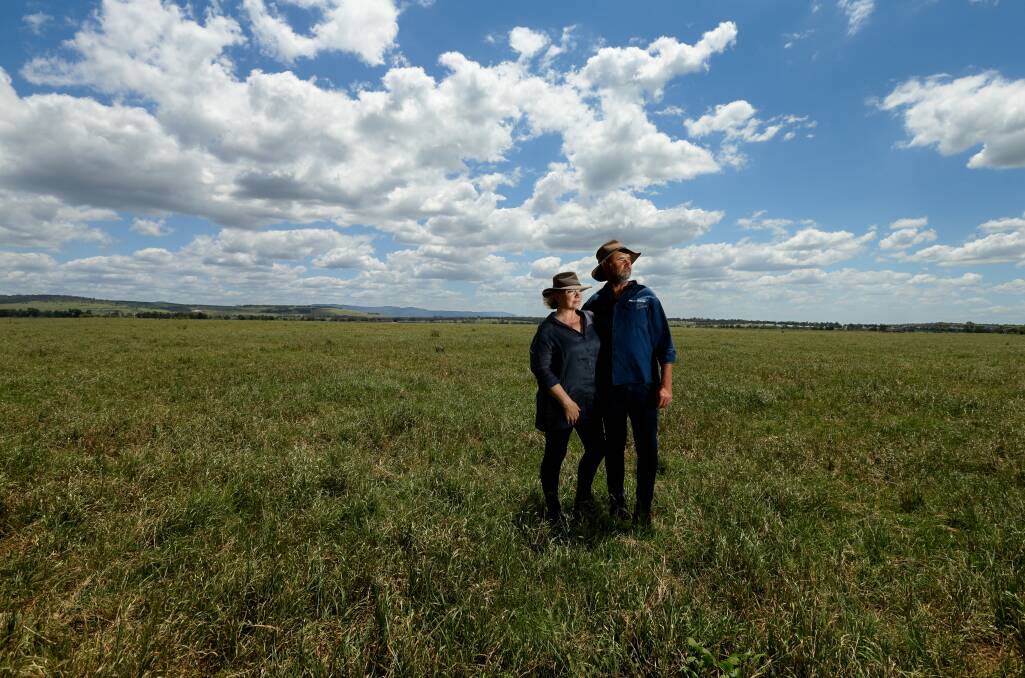
They met randomly at a harbourside pub in Newcastle. Neither had ever been married. He was a Hunter Valley dairyman. She was a jet-setting Australian architect. They met over a beer, but both had a passion for wine. They kept in touch by skyping, and soon he visited her, in Bahrain in the Middle East where her office was located.
The couple got married in Wollombi and had a reception for 70 at Bistro Molines.
"All I did was work," is how Christine McKanna-Farr describes her life before meeting Andrew Farr, her husband of eight years now. "My relationship was architecture and my love of travel and my love of clients. I turned a milestone year and you realise time is of the essence. I could be a nomadic design junkie for the rest of my life or put some roots down."
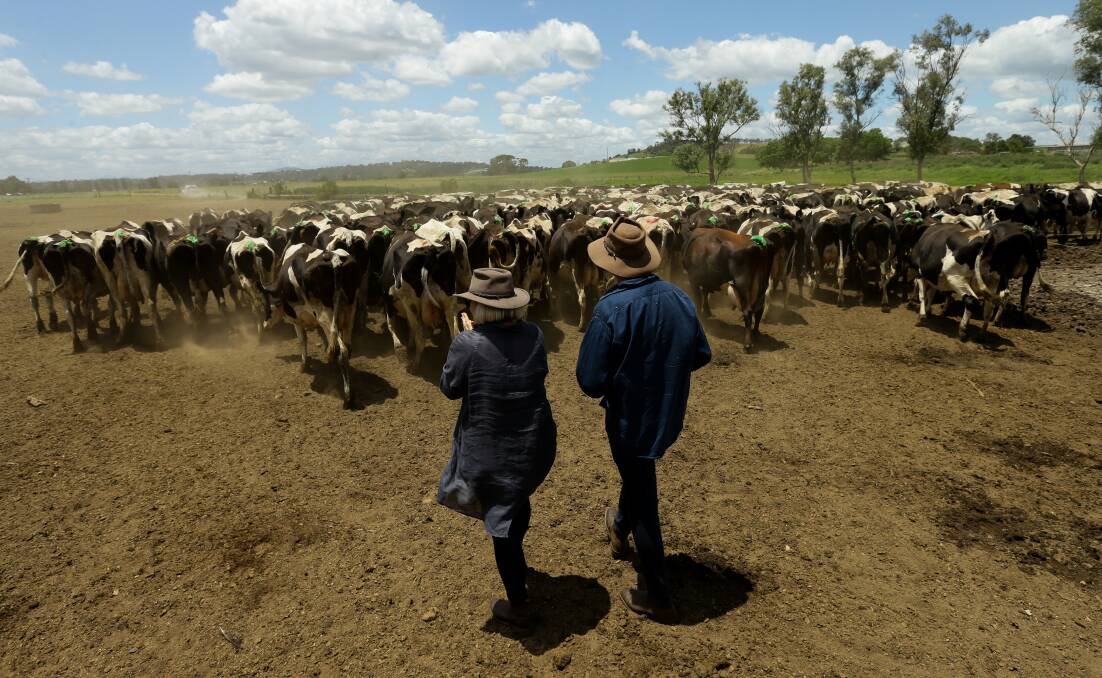
Andrew Farr grew up on a family farm at Palmdale near Ourimbah on the Central Coast. Forty dairy cows, an orange grove and broiler chic kens on 100 acres sustained three families. His family moved to Denman in the Hunter Valley, and he got a uni degree in agriculture science. Despite leaving the industry nearly 15 years ago for a break, he held on to his dairy herd.
A little over three years ago the couple won a competitive national tender to lease an 1100-acre dairy farm on the Hunter River on the outskirts of Singleton, Christine's business nous and Andrew's agricultural background combined to produce a convincing case that they could turn the property into a showcase for modern farming.
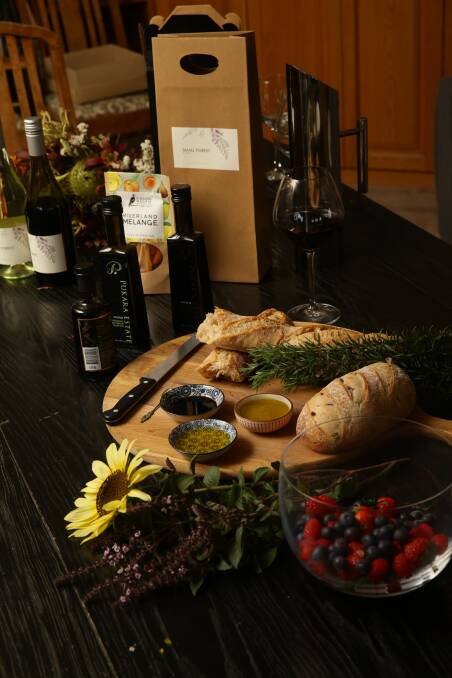
Now settled at Riviera, at the end of Hambleton Hill Road, with their six-year-old daughter Benedict, six dogs, three horses, a pair of guinea fowl and 900 head of dairy and beef cattle, they are deep into their plans to transform the farm through soil improvement, feeding and breeding processes and technology to come (robotics, to name one).
Christine is still running her international architecture business from the property, grounded from international travel by the covid pandemic restrictions. At the moment projects on the board include a luxe apartment project in Burleigh Heads, a high-end resort concept in Kangaroo Valley and some projects in Kuala Lumpur, where she still has staff working for her.
The pride of her side projects (her business is called Design Milk Studio) is Glenrock, a 100-acre property near Bulga adjacent to Wollemi National Park that the Farrs own. Step by step, she is renovating and modernising the 1903-circa cottage. She's recently completed the bathroom renovation for the luxe property.
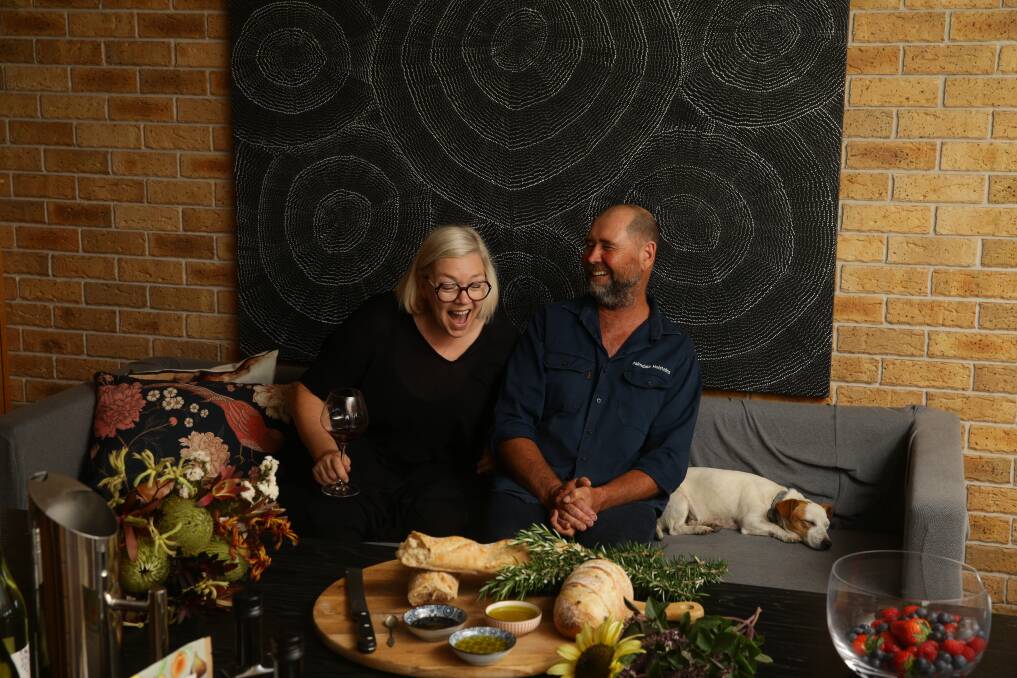
She is closely studying the Hunter Valley for future projects, anticipating that the opening the Newcastle Airport to international travel will pave the way for global hoteliers to consider creating boutique getaway properties in Pokolbin and surrounds.
At the moment, the Farrs are milking about 500 dairy cows, producing around 2million litres of milk a year. Their neighbours are long-time family dairy farm families, although renown artist Dale Frank lives not far down Hambleton Hill Road.
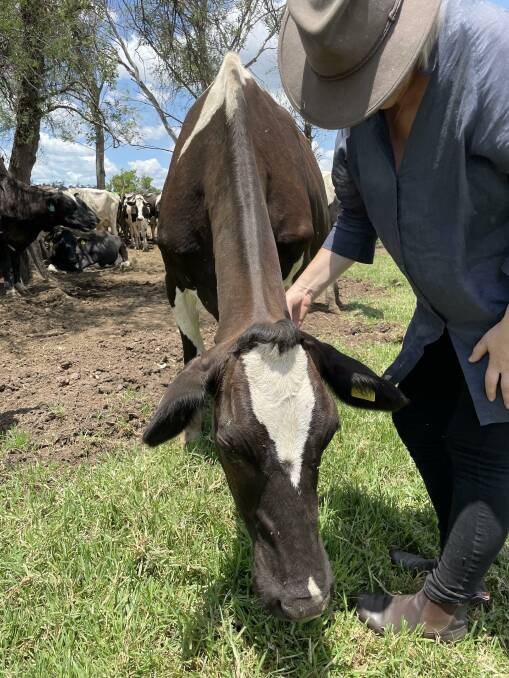
But numbers can be deceiving. It's how you get to the numbers that matters a great deal.
"We had a pretty good reflection on what we're doing after the drought," Andrew says. "We are going to shift our system, it's part of the environment and climate and those sorts of things, it will take us three years to do it."
The Farrs are moving to a seasonal calving system, calving in autumn, keeping them on cow milk until the end of December and then letting them feed on the pastures when they have the greatest amount of natural feed.
"It means we're not resowing pastures all the time," Andrew says.
At the same time they have been improving their pastures, turning them into perennial pastures so they don't have to be planted (cultivated every year).
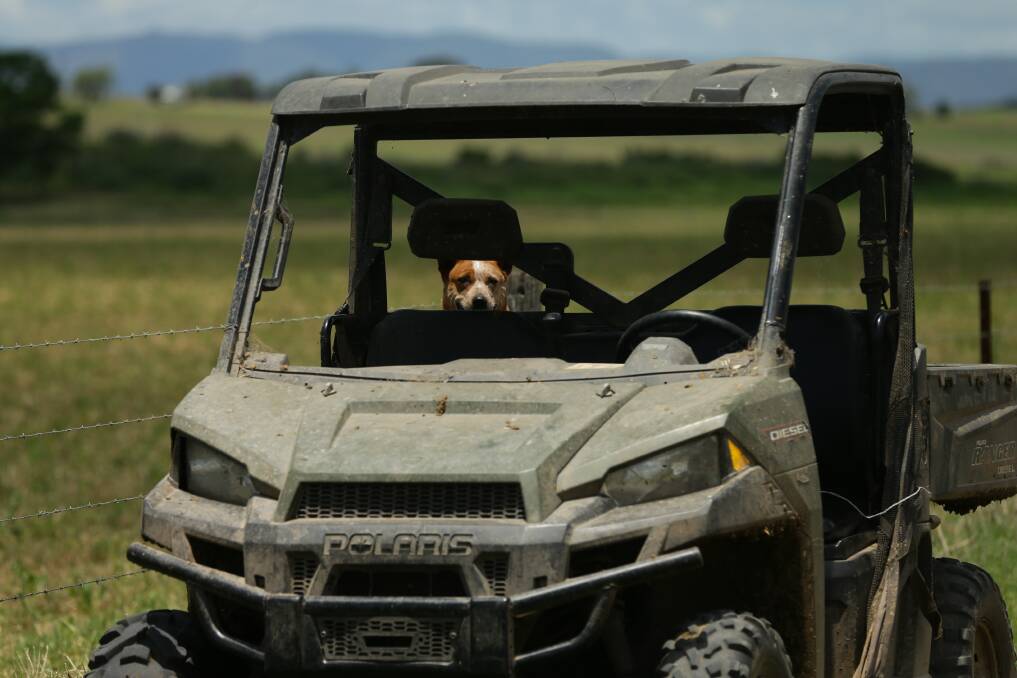
They provide about 80 per cent of the feed for their cows from own pasture, with the remaining 20 per cent coming from grain. The grain feed enhances milk production, but Andrew says the stock experience fewer health issues when grain is reduced.
"We've been here three-and-a-half years," Andrew says. "We are working our way through renovating the entire property. Part of that is number one, increase our soil nutrients and get them as productive as we can."
Perennial species can achieve better water utilisation than annual species, reducing waterlogging, dryland salinity, and nutrient loss through run-off.
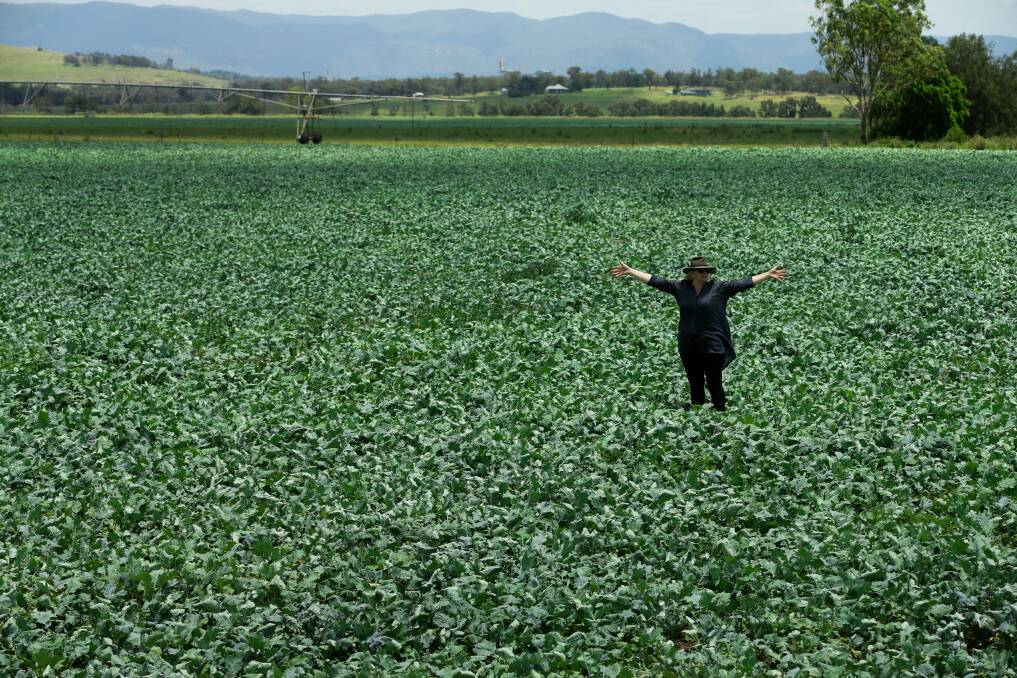
"In terms of an environmental result, we'll actually start to sequester carbon, in that system, because we're not cultivating. We don't cultivate - we're not changing crops over all the time," he says.
Of course, it's a long process, which involves ridding current pastures of weeds and improving soil nutrition.
Andrew is working with Loop Organics, which supplies biosolids, sourced from Singleton and Newcastle sewerage treatment plants. Biosolids are treated solids from the wastewater treatment process that are routinely applied to land as fertiliser.
"It's part of the renovation process here," Andrew says. "We've got a lot of weed issues, so we use biosolids and incorporate them on top of the weeds and start to establish a decent perennial base. There's a lot of environmental safeguards around using biosolids - we can't graze it for 90 days after it's been incorporated. It has to be incorporated within 36 hours of it being spread. No runoff. Lots of EPA rules, which is fair enough. It really works well with what we are trying to do."
Andrew has also used Loop's biosolid and paper waste mixed product, which has less restrictions.
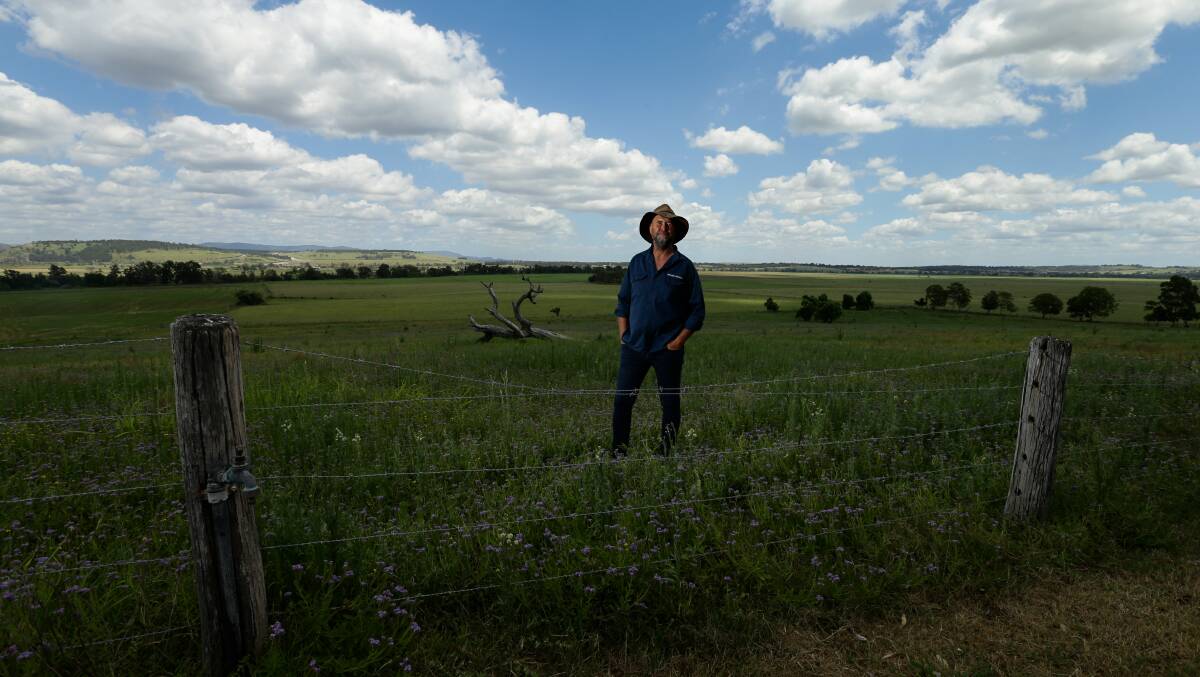
"We can use it like a normal fertiliser. It has an earthy smell and texture," he says.
It's not all work and no play for the Farrs. For Christine, a city girl, it's been vital to connect with locals who appreciate the area and what primary producers put into it - and the quality of the goods.
They count among their friends, Atsuko and Andrew Radcliffe from Small Forest Wines in Denman, and Sue and Matt Simmons from Melanda Park pig farm near Denman, which supplies suckling pigs to the Sydney restaurant market.
As Christine explains: "We've come to a big landscape, but connected to different people - like burnt out chefs from Sydney. As a group, we have an incredible connection to the land and food. Like in Asia, everything is focused on family and food."
As a third generation dairy farmer, and someone with a great deal of experience in the Hunter, Andrew carries a healthy sense of perspective about being in agriculture.
"It's a lot of work. This place needs a lot of work and tidying up," he says. "But it's an amazing opportunity. We have a really good relationship with the owners across the river [Yancoal]. It's theirs.
"We're here. We do the right thing by them, they do the right thing by us. We're here for the long term."
Over the Christmas holidays the Farrs have trialled "10-in- 7" milking, picking up on a conversation Andrew had with one of neighbours. He was short-staffed, and well aware of the high rate of burn-out in the dairy industry. And he needed a holiday - the family had planned a whole three days away from the farm in mid-January.
The 10-in-7 method means milking the cows 10 times in seven days instead of twice a day, including only once on Saturday and once on Sunday. It does not result in a decrease in overall milk production.
The chemistry between Christine and Andrew is not only about the leisure things they enjoy: their intellectual curiosity also pulls them together.
Did Andrew think he was marrying a business partner?
"I think we naturally gravitated towards it as a couple," he says. "Her strengths working in international business complements my knowledge here. And she's great, at giving me a kick up the backside, 'I think we need to this, we need to do that differently.' That's great thing about being in a marriage and a partnership.
"I'm open to change."







